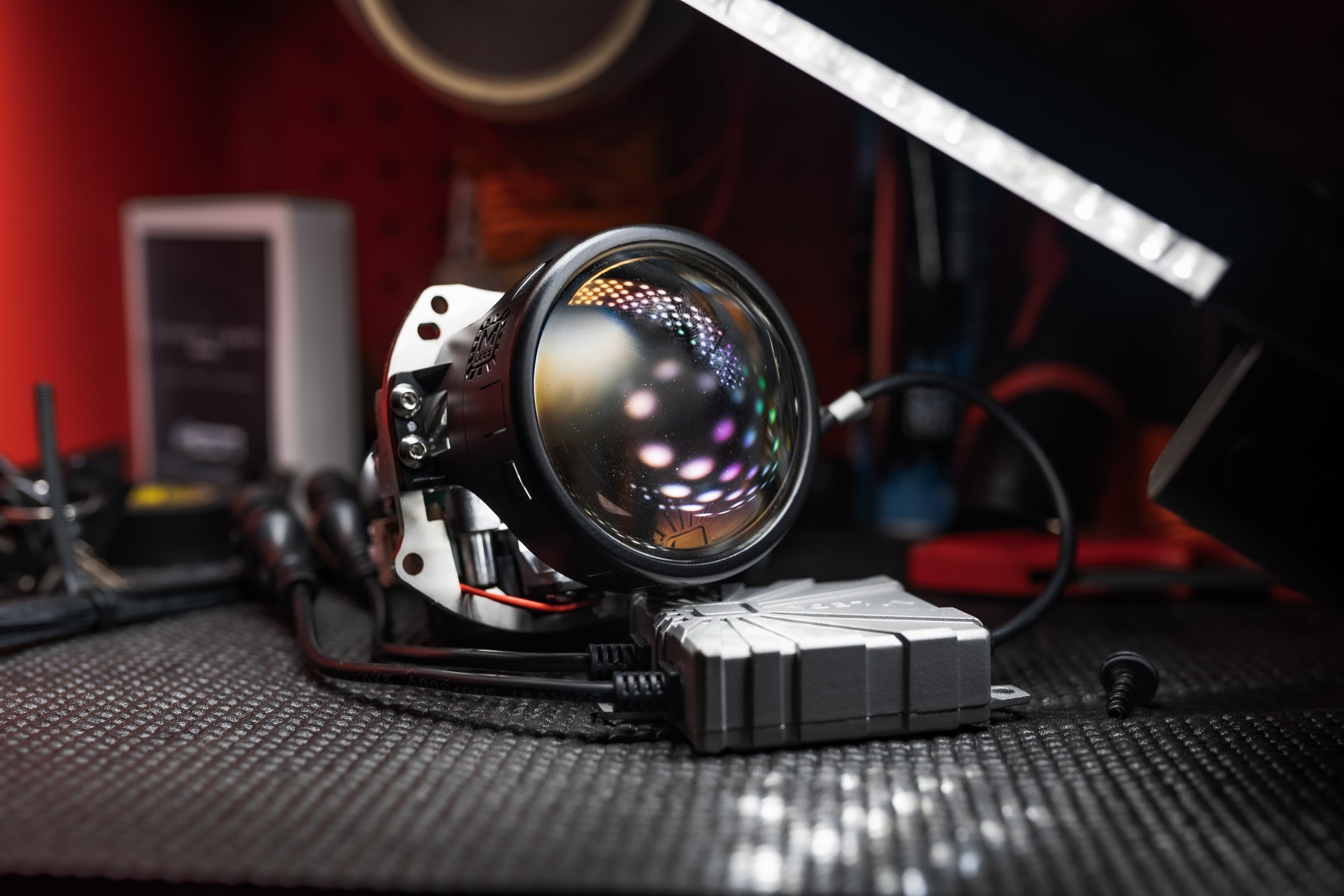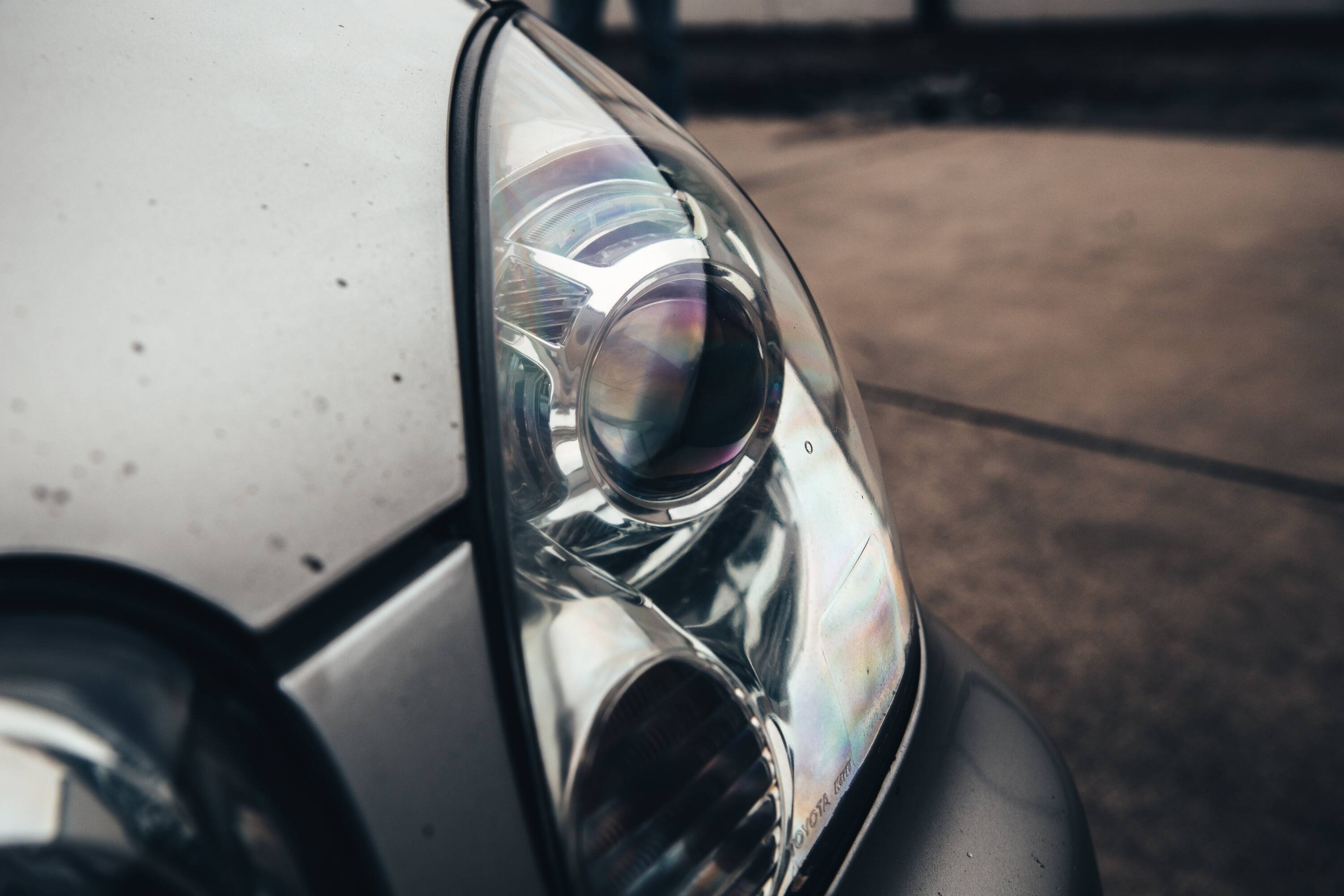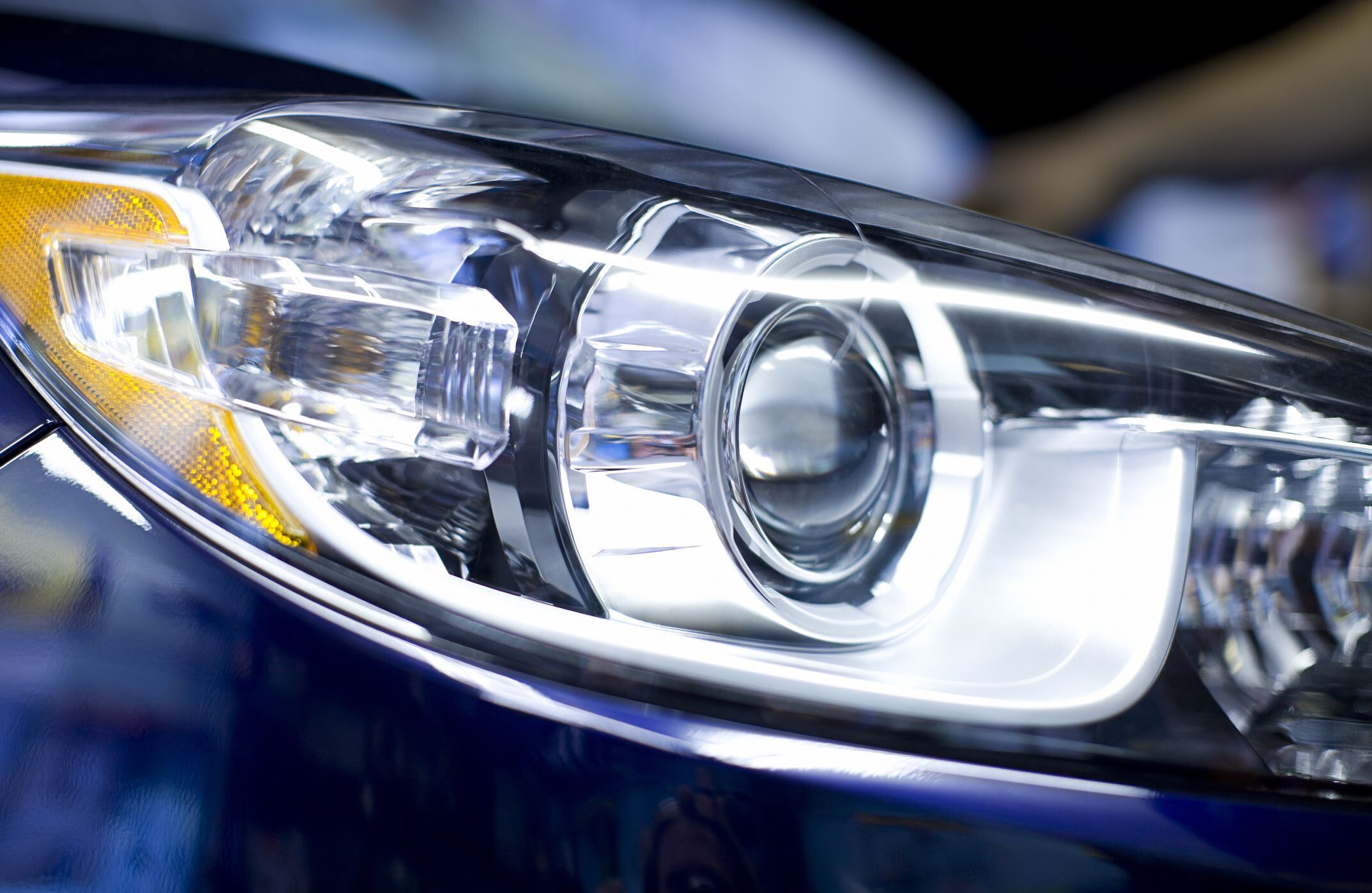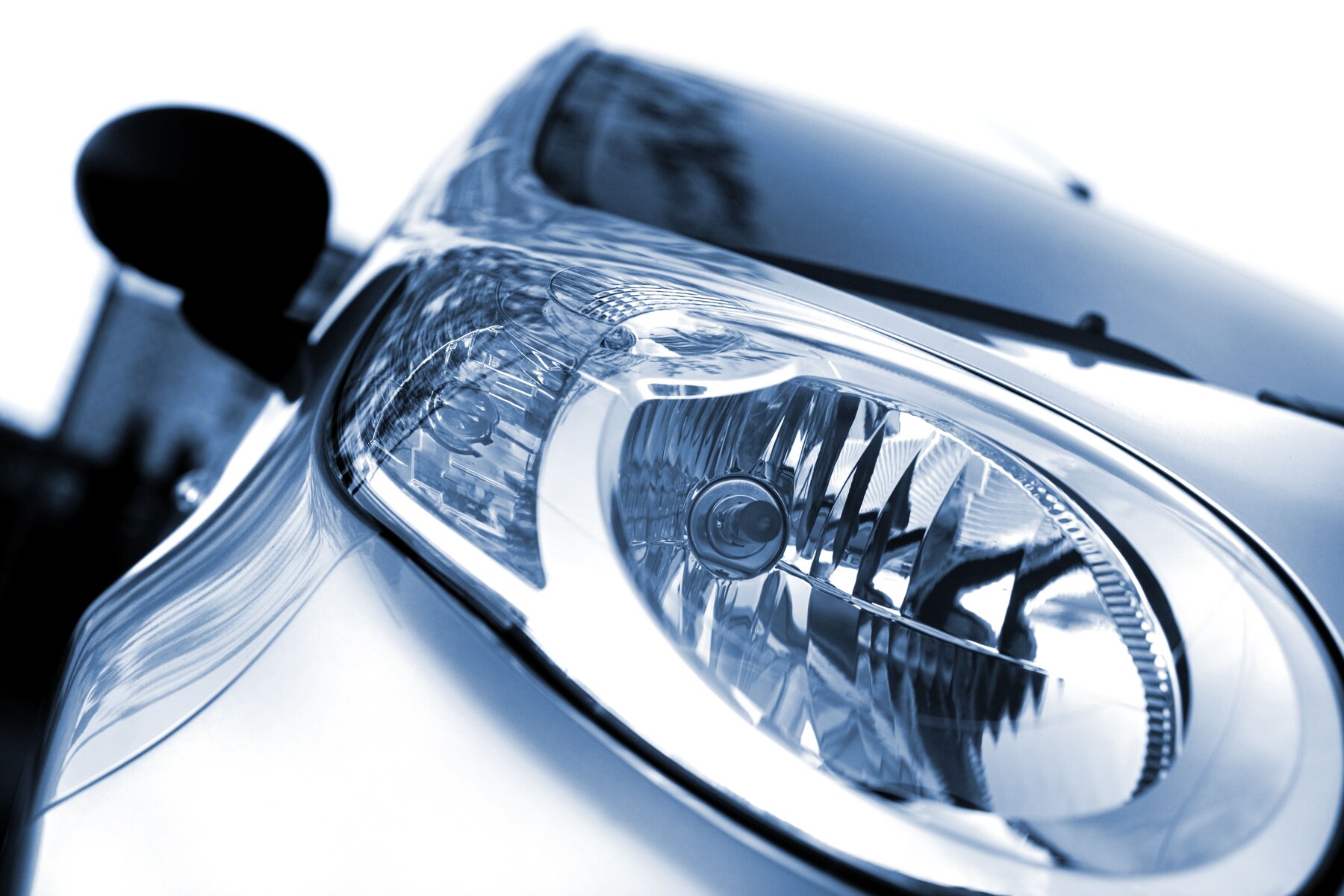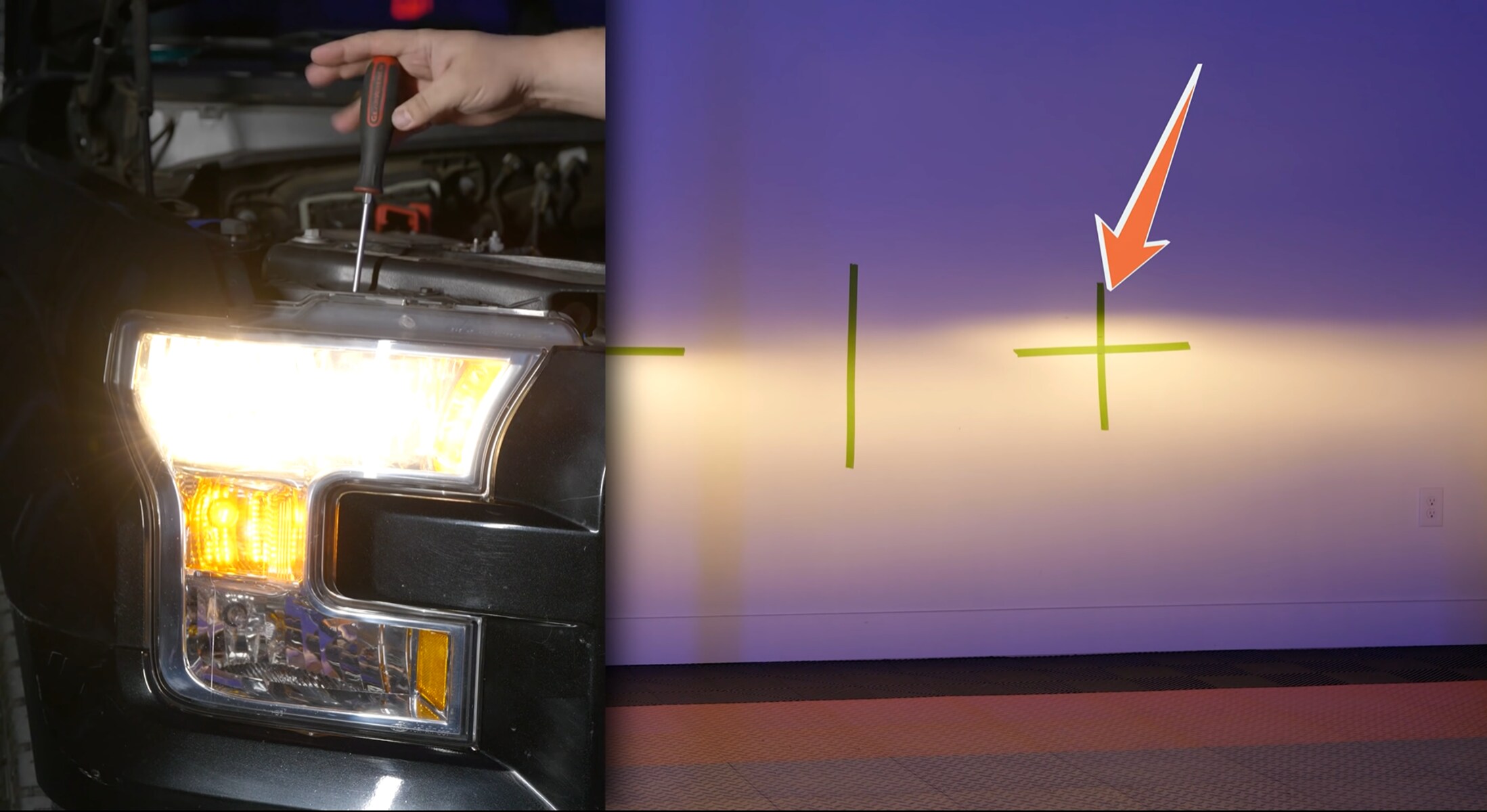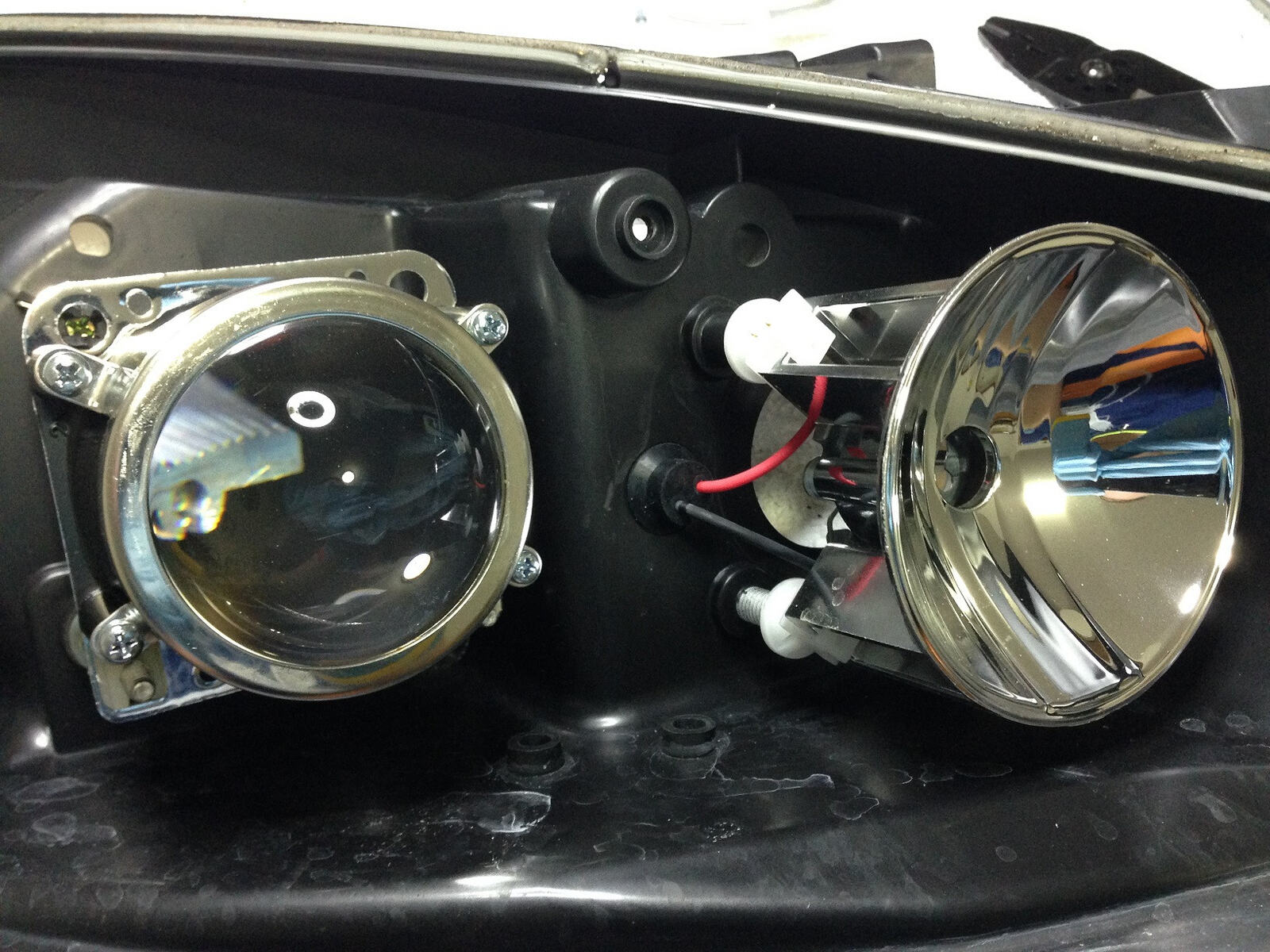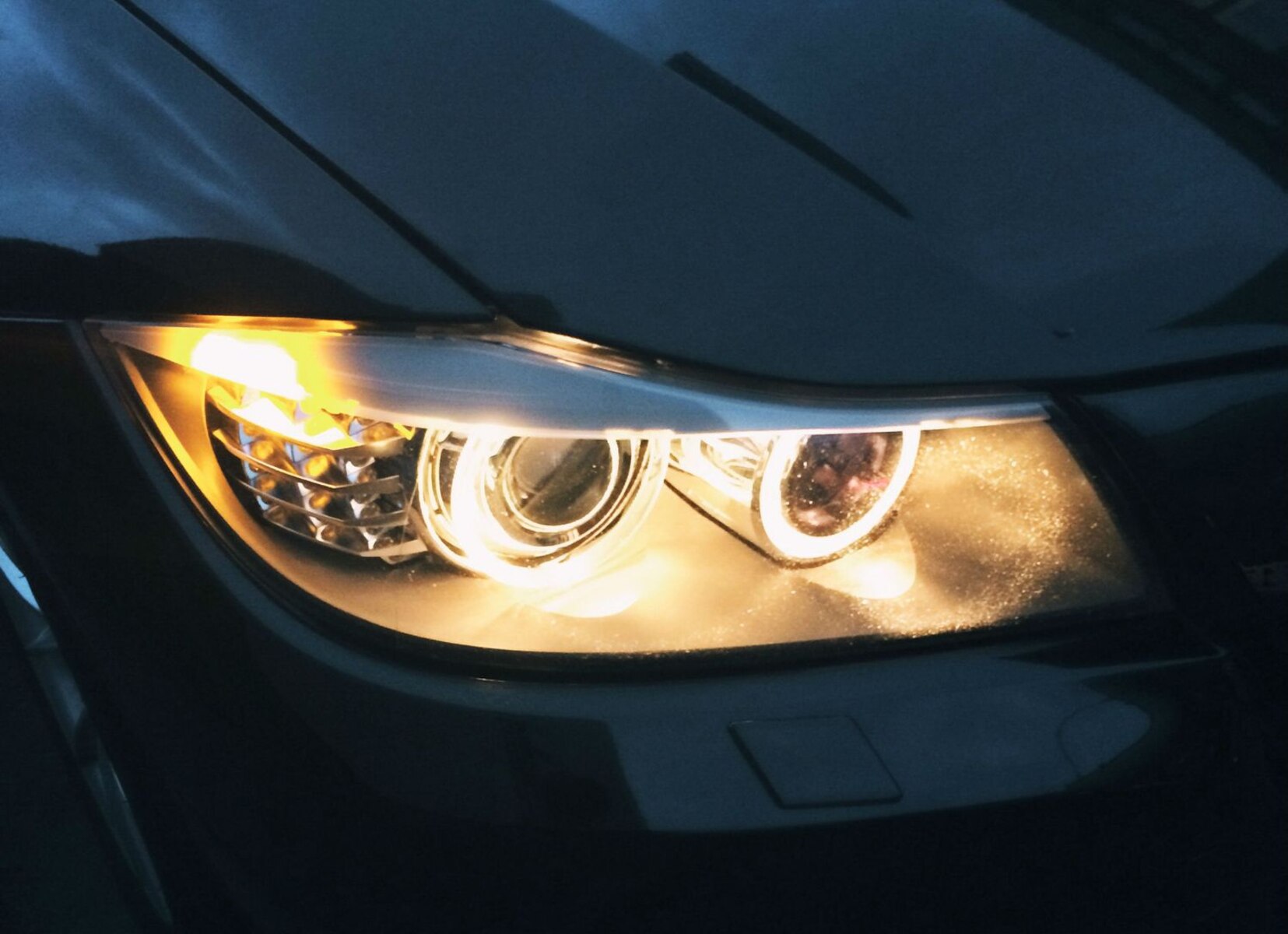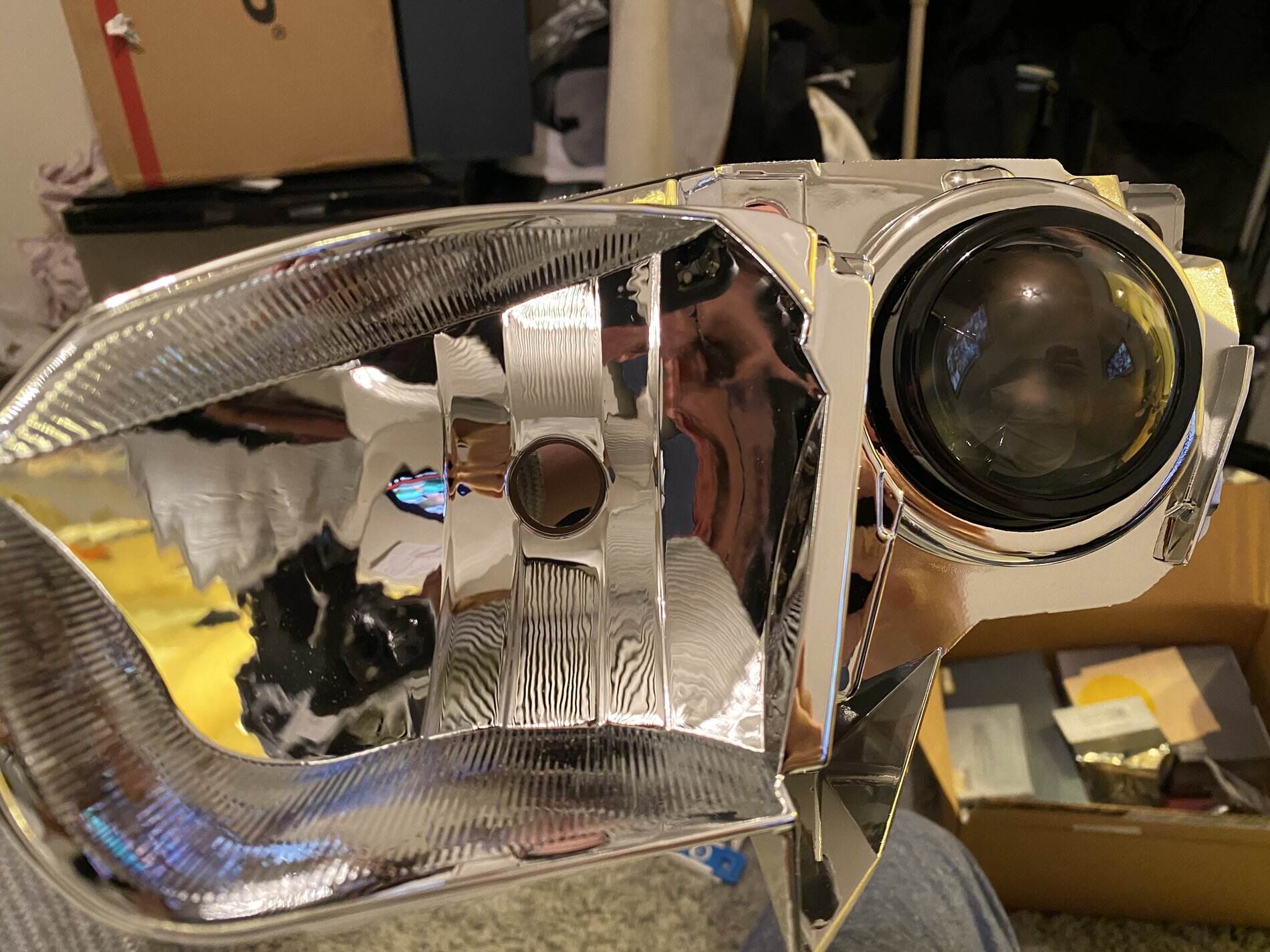Introduction
Projector headlights are a popular and stylish lighting option for vehicles, providing enhanced visibility and an aesthetically pleasing design. These headlights are a significant upgrade from the traditional halogen headlights, offering better focus and improved light distribution. Whether you’re a car enthusiast or just looking to upgrade your vehicle’s lighting, understanding how projector headlights work can help you make an informed decision.
Projector headlights utilize a complex system of components to generate a focused and controlled beam of light. These components include a light source, reflector, lens, and shutter. Together, they work harmoniously to ensure optimal visibility while driving.
One of the key features of projector headlights is their unique design, which differs from the conventional headlights found in most vehicles. While traditional headlights rely on reflectors to disperse light, projector headlights use lenses to focus the light into a controlled beam. This design allows for more precise light output and prevents any scattering or stray light that can cause glare for other drivers.
Furthermore, projector headlights also have the ability to adjust the beam pattern according to the vehicle’s speed and driving conditions. This is achieved through the use of a shutter mechanism, which changes the light distribution to ensure maximum visibility for the driver. The result is a safer and more enjoyable driving experience, especially during night-time or adverse weather conditions.
Overall, projector headlights offer several benefits over traditional halogen headlights. Apart from improved visibility and safety, they also provide a more visually appealing look to the front end of the vehicle. The focused beam of light not only enhances visibility, but also reduces glare for other drivers on the road. Additionally, projector headlights are compatible with various light sources, including halogen bulbs, HID (High-Intensity Discharge) bulbs, and LED (Light-Emitting Diode) modules, allowing for versatility and customization.
In the following sections, we will dive deeper into the working principles of projector headlights, exploring the function of each component and debunking common misconceptions surrounding them. So, let’s shed some light on how these innovative headlights work!
What are projector headlights?
Projector headlights are a type of lighting system that utilizes a unique design to produce a focused and controlled beam of light. Unlike traditional headlights, which use reflectors to disperse light, projector headlights employ a lens to concentrate the light into a precise beam.
The distinctive feature of projector headlights is the presence of a small, enclosed projector within the headlight housing. This projector consists of several components, including a light source, reflector, lens, and shutter. Together, these elements work together to ensure optimal lighting performance and improved visibility on the road.
Projector headlights were originally introduced in luxury vehicles to offer superior lighting quality and a more stylish appearance. However, they have become increasingly popular and are now available in many different car models. They are particularly sought after by car enthusiasts and those looking to enhance their vehicle’s appearance and functionality.
One of the main advantages of projector headlights is their ability to produce a well-defined and focused light beam. The lens in the projector headlight acts as a magnifying glass, directing the light rays to create a sharp cutoff line. This cutoff line helps prevent the light from scattering or causing glare for oncoming drivers, resulting in safer and more comfortable night-time driving.
Another notable feature of projector headlights is the ability to adjust the light beam distribution. This is achieved through the use of a shutter mechanism within the projector. The shutter can be controlled electronically or mechanically to change the shape and direction of the light beam. This allows the driver to customize the light distribution according to specific driving conditions, further enhancing visibility and safety.
Projector headlights are compatible with various light sources, including halogen bulbs, HID bulbs, and LED modules. This adaptability allows car owners to choose the type of lighting that best suits their preferences and needs. LED projector headlights, in particular, have gained popularity due to their energy efficiency, longer lifespan, and brighter illumination.
Overall, projector headlights offer significant advantages over traditional headlights. They provide improved visibility, reduced glare, and a more stylish and contemporary look for vehicles. Whether you want to enhance your driving experience or simply upgrade your car’s aesthetics, projector headlights are a reliable and visually appealing option.
Working Principle of Projector Headlights
The working principle of projector headlights revolves around the precise control and manipulation of light to create an optimal and focused beam. Understanding this principle helps us appreciate the advanced technology behind these headlights and their ability to provide superior visibility and safety.
Projector headlights consist of several key components, including a light source, reflector, lens, and shutter. Each component plays a crucial role in the overall functioning and performance of the headlights.
The light source is typically a halogen bulb, HID bulb, or LED module. It emits a bright and intense light, serving as the starting point of the headlight system.
The reflector is responsible for redirecting the light emitted by the light source towards the lens. It is designed in a way that ensures an even and efficient distribution of light onto the lens.
The lens is the most crucial component of projector headlights. It acts as a magnifying glass, focusing the light rays into a concentrated beam. This creates a sharp and defined cutoff line, preventing the light from scattering and causing glare for oncoming drivers.
Another important element is the shutter mechanism. This mechanism allows for the adjustment of the light distribution according to specific driving conditions. By changing the shape and direction of the light beam, the shutter ensures optimal visibility and safety.
When the headlights are turned on, the light source illuminates, and the light is reflected by the reflector. The reflected light is then directed towards the lens, which focuses and shapes the beam. The shutter, controlled electronically or mechanically, adjusts the light distribution to fit different driving situations.
In low-beam mode, the shutter shapes the beam to provide a wide and even distribution of light for enhanced visibility. This mode is typically used for regular driving conditions, where maximum visibility is necessary without causing glare for other drivers.
In high-beam mode, the shutter retracts or moves out of the way, allowing the full power of the light source to be projected forward. This results in a brighter and more focused beam that provides excellent long-range visibility, ideal for driving on poorly lit roads or highways.
The working principle of projector headlights ensures that the light is focused and controlled, providing improved visibility for the driver and minimizing glare for oncoming traffic. This technology makes projector headlights a preferred choice for many vehicle owners looking for enhanced safety and a modern aesthetic.
Light Source
The light source is a crucial component of projector headlights, as it determines the brightness and quality of the light emitted. There are several types of light sources commonly used in projector headlights, including halogen bulbs, HID bulbs, and LED modules.
Halogen bulbs have been used in vehicles for many years and are known for their cost-effectiveness and availability. They consist of a tungsten filament enclosed within a quartz or glass bulb filled with halogen gas. When an electric current passes through the filament, it heats up and emits light. Halogen bulbs provide a warm, yellowish light and offer satisfactory performance as a light source for projector headlights.
High-Intensity Discharge (HID) bulbs, also known as Xenon bulbs, are a popular choice for projector headlights due to their superior brightness and light output. HID bulbs work by passing an electric current through a gas-filled chamber, typically xenon gas. This creates an arc of light, resulting in a bright and intense illumination. HID bulbs offer a more intense white light, closer to natural daylight, enhancing visibility and reducing eye strain. They also have a longer lifespan compared to halogen bulbs.
LED (Light-Emitting Diode) modules are the latest advancement in automotive lighting technology used as the light source in projector headlights. LED headlights are highly energy-efficient, produce minimal heat, and have a considerably longer lifespan compared to halogen and HID bulbs. They generate light by passing an electric current through a semiconductor material. LED modules offer a bright and focused light, providing excellent visibility on the road. Additionally, LED headlights allow for customization with different color temperatures, allowing vehicle owners to personalize the look of their headlights.
The choice of light source depends on personal preference, budget, and desired performance. Each type of light source has its advantages and disadvantages. Halogen bulbs are the most cost-effective option, while HID bulbs and LED modules offer improved brightness and longevity. LED modules are also known for their energy efficiency and versatility in customizing the color temperature.
It’s important to note that regardless of the light source used, projector headlights are designed to optimize the performance of each type. They ensure that the light emitted is properly focused and distributed, providing maximum visibility and minimizing glare for oncoming traffic.
Overall, the light source plays a critical role in the performance and functionality of projector headlights. Whether it’s halogen bulbs, HID bulbs, or LED modules, each light source provides its unique benefits, allowing vehicle owners to enhance their driving experience with improved visibility and style.
Reflector
The reflector is an essential component of projector headlights that plays a crucial role in redirecting and distributing the light emitted by the light source. Its primary function is to ensure an even and efficient distribution of light onto the lens, allowing for optimal visibility on the road.
The reflector is typically located behind the light source within the headlight housing. It is specially designed to reflect and redirect the light rays in a desired pattern. The reflector is shaped in a way that maximizes the efficiency of light reflection, minimizing any loss or scattering of light.
The shape and design of the reflector can vary depending on the specific headlight model and manufacturer. Reflectors can be parabolic or ellipsoidal in shape, each with its advantages and characteristics.
A parabolic reflector is designed to reflect light rays in a parallel manner to the headlight’s optical axis. This helps ensure that the light output is focused and directed forward, increasing overall brightness and visibility. Parabolic reflectors are commonly used in projector headlights and are known for their efficiency in producing a concentrated beam of light.
On the other hand, an ellipsoidal reflector is shaped like a stretched-out oval. It allows for precise control and shaping of the light beam. Ellipsoidal reflectors are used in certain projector headlight designs to achieve specific light distribution patterns, such as asymmetrical beams for driving in different road conditions.
One key advantage of using a reflector in projector headlights is the ability to control and shape the light output. This ensures that the light is directed where it is needed most, enhancing visibility on the road and minimizing any potential glare for oncoming drivers.
It’s important to note that the reflector alone is not responsible for creating the sharp cutoff line observed in projector headlights. Instead, it works in conjunction with the lens to achieve this effect. The reflector assists in directing the light towards the lens, which further focuses and shapes the beam, resulting in a well-defined cutoff line.
Moreover, the reflector also plays a role in optimizing the performance of different light sources. It helps distribute and utilize the light emitted by halogen bulbs, HID bulbs, or LED modules effectively. This ensures that the maximum brightness and light output of the chosen light source are utilized, enhancing the overall functionality of the projector headlights.
In summary, the reflector in projector headlights is a critical component that helps shape and direct the light output, ensuring optimal visibility and safety on the road. Its design and efficiency in reflecting light contribute to the enhanced performance of projector headlights, making them a popular choice for vehicle owners seeking improved lighting solutions.
Lens
The lens is a fundamental component of projector headlights that plays a vital role in focusing and shaping the light emitted by the light source. It works in conjunction with the reflector to ensure optimal light distribution and visibility on the road.
The lens in projector headlights acts as a magnifying glass, focusing the light rays into a concentrated beam. Its specific curvature and design help control the trajectory of the light and allow for precise beam shaping.
One of the key functions of the lens is to create a sharp cutoff line. This cutoff line defines the boundary between the illuminated and unilluminated areas on the road. By preventing light from scattering or causing glare for oncoming drivers, the cutoff line enhances safety and visibility during night-time driving.
The shape and design of the lens are crucial in achieving this sharp cutoff line. The lens is often convex in shape, allowing it to gather and refract light in a specific manner. The curvature of the lens directs the light rays towards a specific focal point, resulting in a focused and controlled beam.
Moreover, the lens also assists in controlling the beam pattern for different driving conditions. It can be designed to create a wider beam for low-beam mode, providing a broad and even distribution of light in front of the vehicle. In high-beam mode, the lens can narrow the beam, projecting light further down the road for increased visibility.
Another function of the lens is to correct any optical aberrations and distortions. It helps ensure that the projected light is free from any imperfections or anomalies that could compromise visibility. By utilizing advanced lens materials and precise manufacturing techniques, projector headlights deliver clear and uniform light output.
It’s worth noting that the lens in projector headlights is specifically designed to work in tandem with the reflector and other components of the headlight system. Each element plays a vital role in optimizing the light output and ensuring maximum visibility for the driver.
Furthermore, advancements in lens technology have led to the development of adaptive projector headlights. These headlights utilize movable lenses that can adjust their position and shape the light beam based on the driving situation. The adaptive functionality allows for improved visibility around curves and corners, enhancing safety and reducing driver fatigue.
In summary, the lens in projector headlights is responsible for focusing, shaping, and controlling the light emitted by the light source. Its specific design and curvature enable a sharp cutoff line, even light distribution, and correction of optical distortions. The lens plays a crucial role in optimizing the performance and safety of projector headlights, ensuring clear visibility for drivers on the road.
Shutter
The shutter is a key component of projector headlights that allows for the adjustment of the light distribution pattern. It works in conjunction with the other components to ensure optimal visibility and safety in varying driving conditions.
The primary function of the shutter is to control the shape and direction of the light beam emitted by the projector headlight. It can be controlled electronically or mechanically, depending on the specific design of the headlight.
In low-beam mode, the shutter is typically positioned to create a wide and even distribution of light in front of the vehicle. This ensures maximum visibility without causing glare for other drivers on the road. The wide beam is suitable for regular driving conditions and provides sufficient illumination for the driver to see the surroundings.
In high-beam mode, the shutter either retracts or moves out of the way, allowing the full power of the light source to be prominently projected forward. This results in a brighter and more concentrated beam that provides excellent long-range visibility. The high beam is typically used on poorly lit roads, highways, or when there are no oncoming vehicles.
The ability to control the shutter allows for adaptability and customization based on specific driving situations. For example, some projector headlights incorporate automatic leveling systems that adjust the angle of the light beam according to the vehicle’s load or pitch. This ensures consistent and proper light distribution, regardless of the vehicle’s orientation.
Additionally, certain projector headlights may feature adaptive shutter systems that dynamically adjust the beam pattern based on external factors. These systems can take into account variables such as vehicle speed, steering angle, and weather conditions to optimize the light distribution. This adaptive functionality enhances visibility around curves, corners, and in adverse weather, improving overall safety.
It’s important to note that the shutter works in synchronization with the lens and reflector within the projector housing. These components work together to focus and shape the light emitted by the light source before it is controlled by the shutter. The careful coordination of these elements ensures efficient and precise light distribution.
Overall, the shutter in projector headlights allows for flexibility and adaptability in controlling the light beam’s shape and direction. Whether manually or automatically operated, the shutter plays a significant role in optimizing visibility and safety for drivers on the road.
Light Distribution
Light distribution is a critical aspect of projector headlights that ensures optimal visibility and safety for drivers on the road. The precise control of light distribution helps minimize glare for other drivers while providing sufficient illumination for the driver’s surroundings.
Projector headlights are designed to produce a well-defined and focused light beam, thanks to their unique construction featuring a lens and reflector. The lens plays a vital role in focusing the light rays into a concentrated beam, while the reflector aids in redirecting and distributing the light evenly.
The carefully engineered shape and curvature of the lens and reflector work together to create a distinct cutoff line on the road. The cutoff line separates the illuminated area from the dark area, preventing the light from scattering and causing glare for oncoming traffic. This cutoff line ensures that the light is directed primarily towards the road surface, maximizing visibility and reducing eye fatigue for both the driver and others on the road.
The distribution pattern of the light beam is also influenced by the position of the shutter. In low-beam mode, the light is usually spread out horizontally, providing a wide and even distribution of light in front of the vehicle. This allows the driver to have a comprehensive view of the road and surroundings without causing discomfort or distraction to other drivers.
In high-beam mode, the light distribution has a more concentrated and focused pattern, projecting a longer and brighter beam down the road. This provides increased distance visibility, particularly for driving on poorly lit roads or highways with minimal traffic.
Some projector headlights also incorporate adaptive lighting systems that adjust the light distribution based on driving conditions. These systems can automatically detect various parameters such as vehicle speed, steering angle, and ambient light levels to optimize the beam pattern accordingly. For example, when negotiating curves or corners, the adaptive system may shift the light focus in the direction of the turn, enhancing visibility around bends.
Furthermore, advancements in technology have led to the development of dynamic bending lights, where the projector headlights can pivot or swivel in response to the vehicle’s steering input. This enables the headlights to cast their beam in the direction of the turn, improving road visibility and overall safety.
In summary, the light distribution in projector headlights is precisely controlled to maximize visibility while minimizing glare. The unique construction of projector headlights, including the lens, reflector, and shutter, work together to create a distinct cutoff line and provide optimal illumination for different driving conditions. These headlights ensure that the light is directed where it is needed most, allowing for a safer and more comfortable driving experience.
Benefits of Projector Headlights
Projector headlights offer several advantages over traditional headlights, making them a popular choice among vehicle owners. These headlights provide enhanced visibility, improved safety, and an attractive aesthetic appeal. Let’s explore some of the key benefits of projector headlights:
1. Superior Visibility: Projector headlights are designed to produce a focused and controlled beam of light. The lens, reflector, and shutter work together to ensure optimal light distribution and eliminate glare for oncoming drivers. This enhances visibility on the road, especially during night-time driving or in adverse weather conditions.
2. Reduced Glare: The distinct cutoff line created by projector headlights helps minimize glare for other drivers. This is achieved by preventing light from scattering and diffusing, ensuring more concentrated illumination on the road surface. By reducing glare, projector headlights contribute to better road safety and a more comfortable driving experience for all road users.
3. Stylish Appearance: Projector headlights add a sleek and modern look to the front end of vehicles. With their distinct design and sharp cutoff line, these headlights offer a more refined and aesthetically appealing appearance compared to traditional headlights. They contribute to the overall visual appeal of the vehicle and can even increase its resale value.
4. Versatility: Projector headlights are compatible with various light sources, including halogen bulbs, HID bulbs, and LED modules. This versatility allows vehicle owners to choose the type of lighting that best suits their preferences and needs. LED projector headlights, in particular, have gained popularity due to their energy efficiency, longer lifespan, and brighter illumination.
5. Customization Options: Projector headlights offer customization options to cater to individual preferences. They can be combined with different types of projector lenses to achieve specific light distribution patterns. Additionally, some projector headlights feature adaptive or dynamic bending systems that adjust the light beam based on driving conditions, further enhancing visibility and safety.
6. Longer Lifespan: HID bulbs and LED modules used in projector headlights typically have a longer lifespan compared to traditional halogen bulbs. This reduces the frequency of bulb replacements, saving both time and money for vehicle owners in the long run.
7. Energy Efficiency: LED projector headlights are highly energy-efficient, consuming less power compared to traditional bulbs. This not only reduces the strain on the vehicle’s electrical system but also helps conserve energy and decrease fuel consumption.
Overall, projector headlights offer a range of benefits, including improved visibility, reduced glare, stylish appearance, versatility, customization options, longer lifespan, and energy efficiency. These advantages make them a preferred choice for many vehicle owners looking to enhance their driving experience and add a touch of sophistication to their vehicles.
Common Misconceptions about Projector Headlights
Projector headlights have gained popularity in recent years, but there are still some misconceptions surrounding their functionality and performance. It’s important to address these misconceptions to provide a clearer understanding of projector headlights and their advantages. Let’s debunk some common misconceptions:
1. Projector headlights are the same as HID headlights: While it’s true that many projector headlights use HID bulbs, the terms are not interchangeable. Projector headlights refer to the specific design of the lighting system, which includes components like the lens, reflector, and shutter. HID headlights, on the other hand, refer to the type of bulb used. Not all projector headlights use HID bulbs, and not all HID headlights are projector headlights.
2. Projector headlights are only for luxury or high-end vehicles: While projector headlights were initially popularized in luxury vehicles, they are now available for a wide range of car models. Projector headlights offer improved visibility and a stylish appearance, making them an appealing option for all types of vehicles, regardless of their make or model.
3. Projector headlights blind other drivers: One common misconception is that projector headlights are excessively bright and blind oncoming drivers. However, this is not necessarily the case. Projector headlights are designed to provide optimal visibility while minimizing glare. The sharp cutoff line and controlled light distribution help prevent excessive glare and provide a more focused beam on the road.
4. Projector headlights are illegal to use: Projector headlights are legal and compliant with regulations when they meet specific criteria such as beam cutoff requirements and proper alignment. However, regulations regarding headlight modifications may vary by jurisdiction, so it’s essential to ensure that any modifications or replacements comply with local laws and regulations.
5. Projector headlights require a higher voltage or power supply: Another misconception is that projector headlights require a higher voltage or power supply compared to traditional headlights. In reality, projector headlights can work with the same voltage and power supply as conventional headlights. The brightness and performance of the lighting system are primarily determined by the type of light source used within the projector headlight.
6. Projector headlights are difficult to install or replace: While projector headlights may have a more complex internal design compared to traditional headlights, they are not necessarily difficult to install or replace. Many projector headlights are designed to be a direct fit for specific vehicle models, making the installation process relatively straightforward. However, if any modifications or customizations are involved, it’s best to consult a professional installer for assistance.
7. Projector headlights are significantly more expensive: While projector headlights may be slightly more expensive than traditional headlights, the price difference is often justified by the enhanced performance and aesthetic appeal they provide. The cost of projector headlights can vary depending on the brand, quality, and availability of compatible light sources.
By addressing these misconceptions, it becomes evident that projector headlights are not only accessible but also offer distinct advantages in terms of visibility, safety, and style. It’s important to have accurate information when considering the use of projector headlights, allowing vehicle owners to make informed decisions and fully enjoy the benefits these innovative lighting systems have to offer.
Conclusion
Projector headlights have revolutionized the world of automotive lighting with their superior visibility, controlled light distribution, and sleek design. These headlights utilize a combination of components, including a light source, reflector, lens, and shutter, to produce a focused and well-defined beam of light. The lens and reflector work together to create a sharp cutoff line, minimizing glare for oncoming drivers and enhancing safety on the road.
One of the major advantages of projector headlights is their ability to provide optimal visibility in various driving conditions. Whether it’s navigating through poorly lit roads, dealing with adverse weather, or driving at high speeds, projector headlights ensure that the road ahead is well illuminated and visible. They offer a significant improvement over traditional headlights, reducing eye strain and increasing overall safety for both the driver and other road users.
Projector headlights also provide an attractive and stylish aesthetic to the vehicle’s front end. With their sleek design and clear cutoff line, these headlights add a touch of sophistication and modernity to any car. They are available in various styles and can be customized to suit individual preferences, contributing to the overall visual appeal of the vehicle.
While there may be some misconceptions surrounding projector headlights, it’s important to separate fact from fiction. Projector headlights are legal and compliant with regulations, and their installation and replacement can be straightforward with the right knowledge or professional assistance. They are not excessively bright or blinding when properly aligned and adjusted.
From enhanced visibility and reduced glare to improved safety and a stylish appearance, projector headlights offer a range of benefits. Whether it’s using halogen bulbs, HID bulbs, or LED modules as the light source, projector headlights deliver superior performance and versatility. They are a worthwhile investment for anyone looking to upgrade their vehicle’s lighting system and elevate their driving experience.
Consider choosing projector headlights to enjoy the advantages they offer. Regardless of the vehicle make or model, projector headlights provide a significant upgrade in visibility, safety, and style. Embrace the innovation and experience the difference projector headlights can make in your driving journey.







